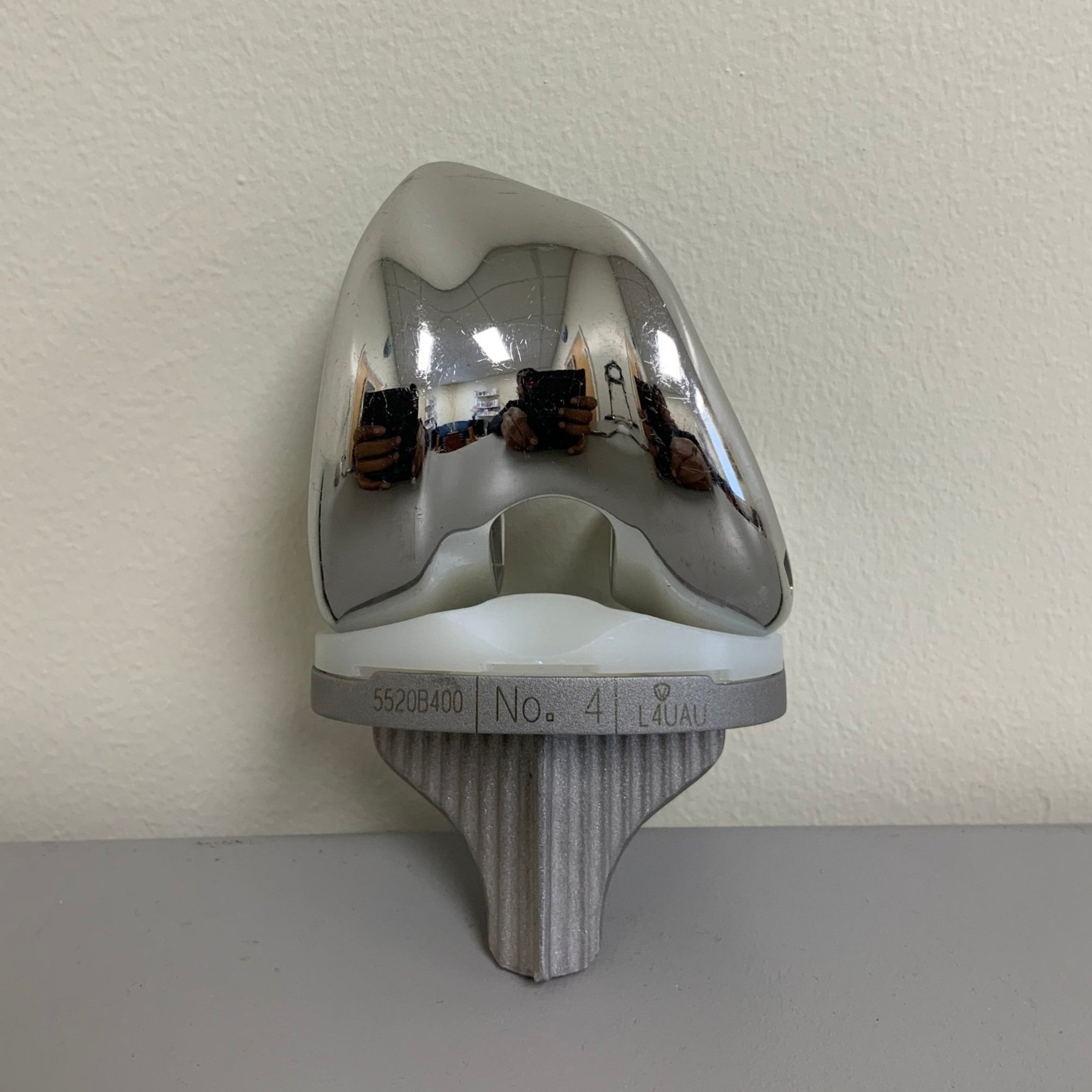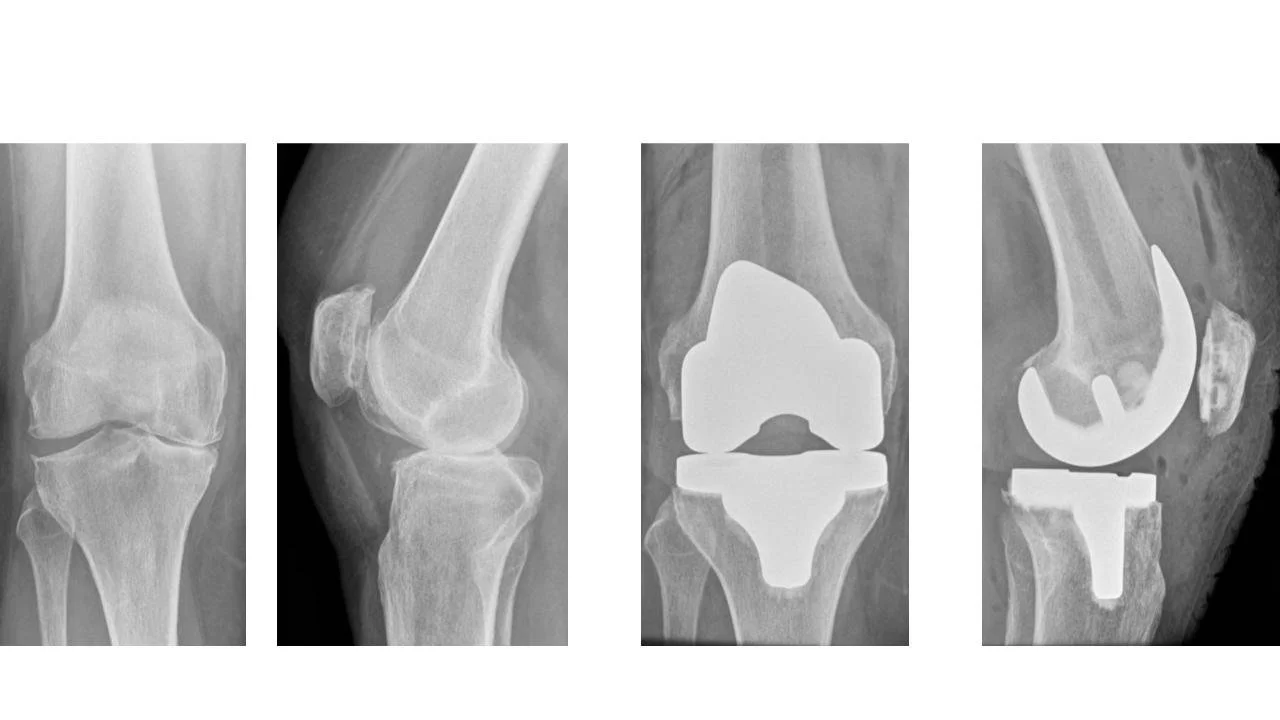knee replacement
types of knee replacement
A knee joint consists of two parts - bottom part of Femur/thigh bone and top part of Tibia/shin bone. A knee replacement involves replacing the worn out ends of the femur and tibia with new prosthetic components.
Generally, there are two types of knee replacements.
Cemented - Both implants (femur and tibia) are fixed to the bone using bone cement. Bone cement is a specialised grout that is used to fix the implant to the bone.
Un-cemented - Both implants are press fixed to the bone without the need for cement.
Attached below are a few examples of knee replacement x-rays taken before and after surgery. In these images, it may also be possible to appreciate the increasing complexity of the arthritis with bone destruction.
Plastic model of a knee joint
An example of a knee implant
Example of total knee replacement for severe arthritis of the inside compartment (bowed knee). X-rays before and after surgery in both front and side views.
Example of total knee replacement for severe arthritis of the outside compartment (Knocked knee). X-rays before and after surgery.
Example of a complex knee replacement with severe bone loss.
Revision knee replacement - removal of loose and broken implant and reconstructing with new and complex implants.
Revision knee replacement - Exchanging a partial knee replacement with arthritis in the outer compartment of the knee joint to a total knee replacement.
Revision knee replacement - Removing a failed partial knee replacement and implanting a full knee replacement.








